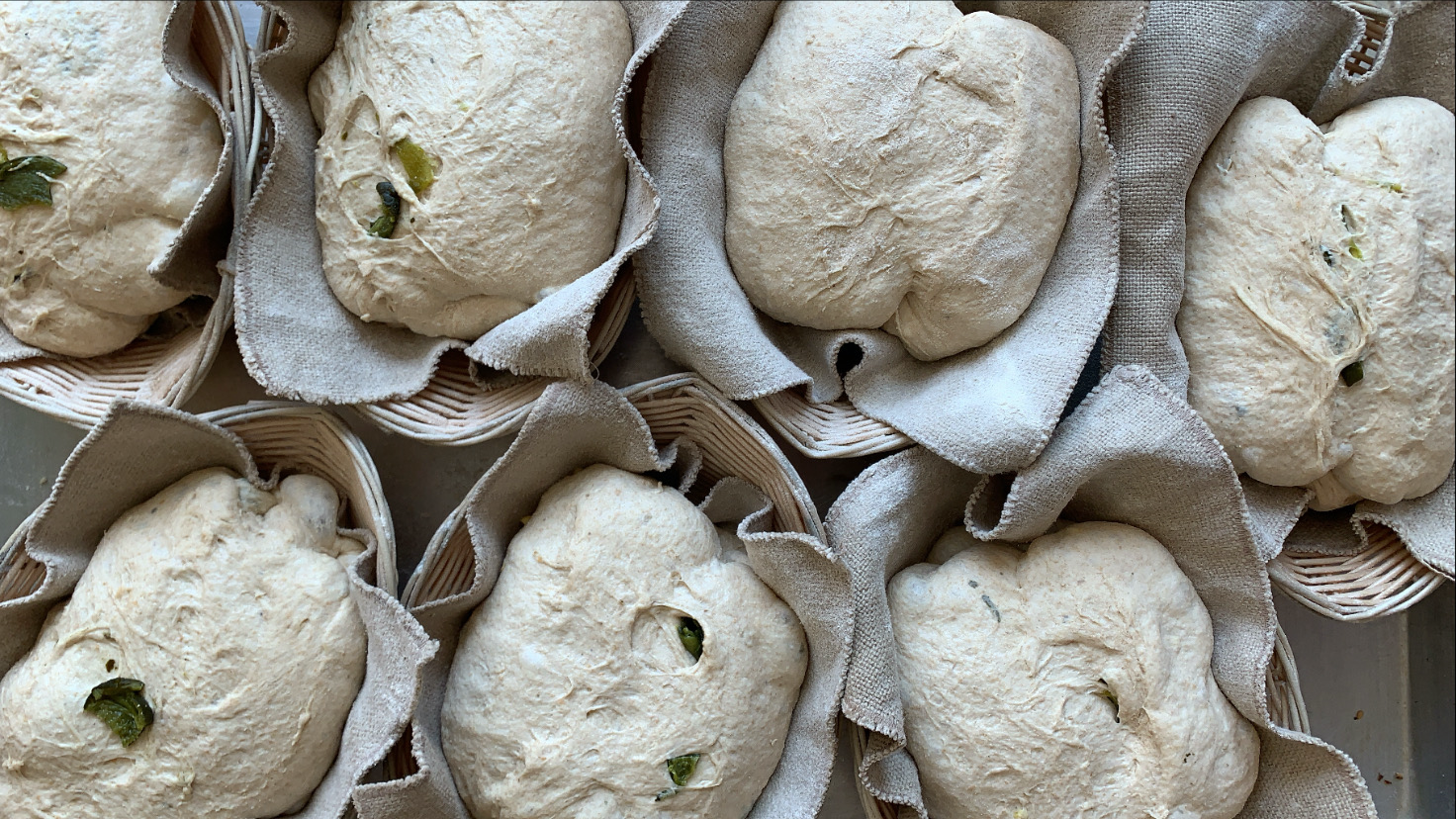Baking season is once again upon us and since you’ve had plenty of time to master our basic sourdough recipe over the last six months, we figured it was time to level up our collective sourdough game.
We’ve rounded up a couple smaller changes you can make gradually to improve your sourdough baking. Or if you’re feeling adventurous, you can try them all at once – it’s up to you!
Increasing Hydration
Our basic sourdough recipe suggests starting with a 75% hydration dough which is easy to work with yet high enough in hydration to consistently create a good loaf. Many bakers prefer higher hydration percentages as it tends to speed up the fermentation process and yields a more open crumb.
To begin, try increasing hydration by 5% to 80% – for our basic sourdough recipe, that means increasing the amount of water from 375g to 400g. As you get used to handling higher hydration dough, you can move to 85% hydration.
Adding Inclusions
If you’re a regular at the bakery, you would have noticed that we’ve been regularly circulating our seasonal sourdough. Most of the time this consists of adding fresh seasonal ingredients to our basic brown dough – think tomato basil or garlic scapes. This helps flavour the entire loaf but you also have the luxury of working with a dough you’re already comfortable with.
The process of adding inclusions to your sourdough is pretty similar across the board. As a general rule, your add-ins should be folded in during the second turn and fold during bulk fermentation. If you’re adding dry elements like seeds or raisins (as opposed to olives or tomatoes, for example) many recipes encourage soaking or scalding the added ingredients so that they’re easier to mix into the dough.
Topping Your Loaf
Some of our favourite sourdoughs (hello, bird bread) have seeds in and on top of the loaf. Coating your sourdough with seeds adds a wonderful flavour and finish to your seeded loaf and it’s actually quite easy. We like to coat our loaves with seeds before the final proof, which can be accomplished a couple different ways.
If you’re working with a higher hydration dough, it will likely be sticky enough to top with seeds without adding any moisture. Just pour the seeds on a plate or in a bowl and roll the top of your loaf (holding the seam), after the final shape, and transfer directly to the proofing basket. If you fear the dough isn’t sticky enough to collect and hold the seeds you can either spray the dough with water or roll the shaped loaf on a damp towel before rolling it in the seeds.


